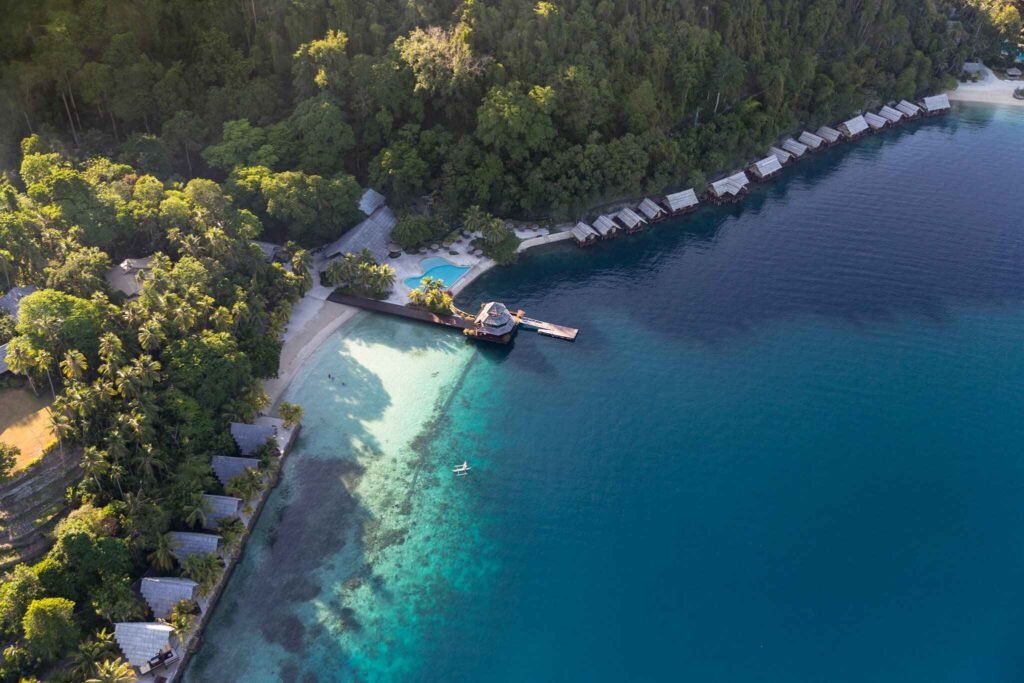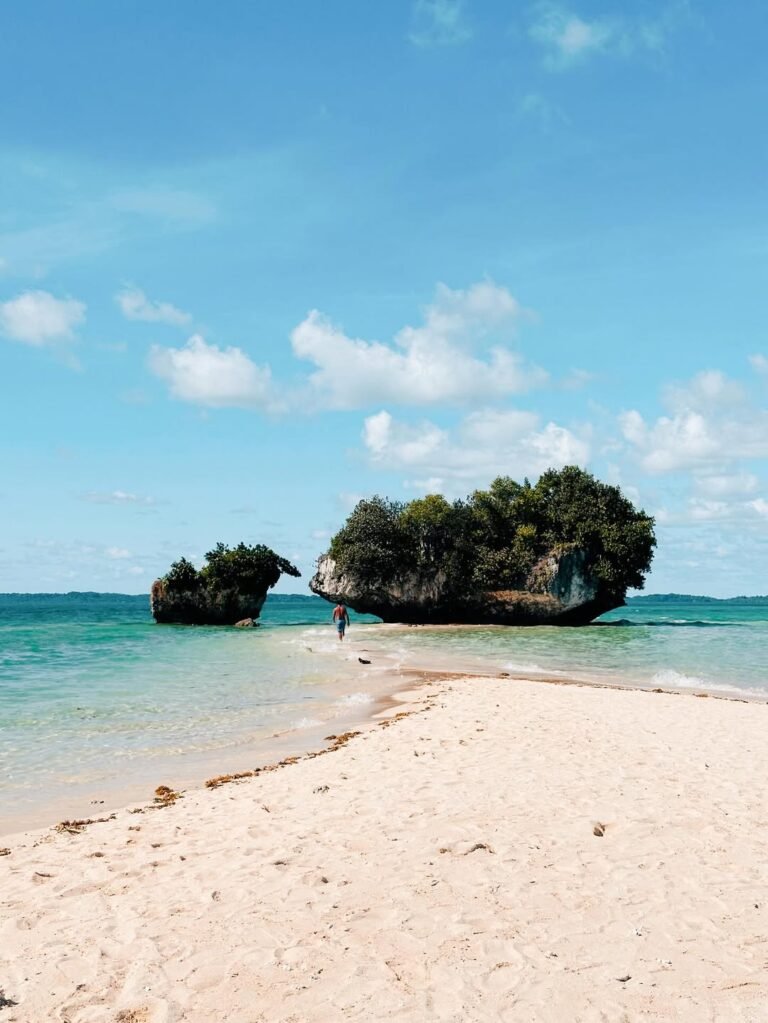
Polillo Island at a Glance — Why This Remote Gem Hooked Me
“When I first sailed into Polillo Island, the water looked like blue glass—and the shoreline felt like it was waiting for me.” This guide is my field-tested playbook to Polillo Island for backpackers: no fluff, just routes, costs, and timing that work. I rode the midnight bus, caught the dawn ferry, and learned the hacks locals use.
What you’ll get: clear steps on how to go to Polillo Island via commute, Ungos Port boat schedule patterns, transport options on arrival, and a shortlist of Polillo Island tourist spots for two to three days. I’ll also show you where to stay in Polillo Island on a budget, what a backpacker spends in a day, and how to plan around tides and weather.
Expect a conversational tone, checklists, and honest cautions—seas can be moody and schedules shift. I’ll note LGU updates when it matters, and share lived moments: the quiet pier before sunrise, a tricycle to a beach, and that first leap into water. If you’re after beaches and uncrowded islands, this Polillo Island travel guide gets you there—smoothly and on budget.
Table of Contents
Quick Facts & Map
-
Province: Quezon (Polillo group on the Pacific side)
-
Jump-off: Ungos Port, Real, Quezon → ferries to Polillo Island port
-
Main towns: Polillo (base), Burdeos (island-hopping gateway)
-
Travel time: Manila–Real 4–5 hrs; ferry 2–3 hrs
-
Best for: backpackers, quiet beaches, simple stays
-
Cash & signal: bring cash; data can be patchy
-
Getting around: tricycle, jeepney, habal-habal; boats for islets
-
Safety: check weather; morning crossings are calmer
See the Polillo Island map in the next section, or embed one up top to show Real → Ungos Port → Polillo town → Burdeos.
Where Is Polillo Island Located? (Quezon Province, Philippines)
Polillo Island sits off the northeastern coast of Quezon Province, part of the Polillo group facing the open Philippine Sea. From Manila, you go east to Real (Ungos Port), then sail a channel often calm at dawn and choppier by mid-afternoon. This exposure to Pacific weather means boat schedules track sea state, tides, and shifting winds.
For planning, think seasonally. Dry months (December–May) bring steadier sailings and clearer water; the wet season can trigger cancellations. If you’re island-hopping in Burdeos, check tide tables so Luli Sandbar appears at low tide. Knowing where Polillo Island sits—and how it meets the sea—helps you pick early crossings, add buffer hours, and travel safer.
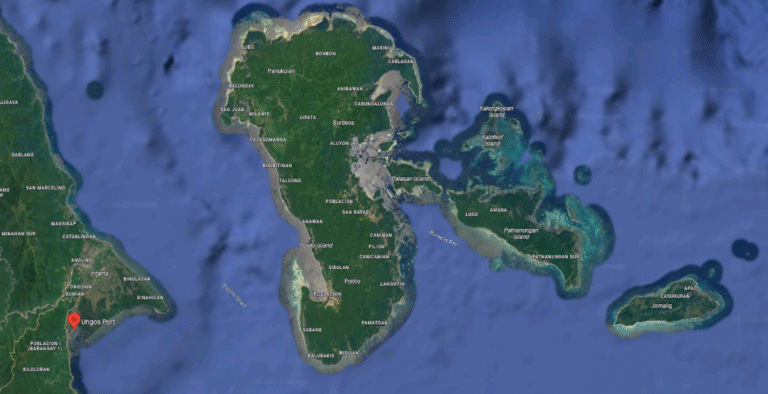
How to Go to Polillo Island (Commute & DIY)
From Manila to Polillo Island via Real, Quezon (Ungos Port) (≈150)
From Metro Manila, I ride straight to Real (Ungos Port), then ferry to Polillo Island. The most painless option is the Raymond Bus from Legarda (near Arellano Univ.) with late-night runs that sync with dawn boats (ordinary ~11:30 PM, aircon ~1:00 AM; there’s also a pre-dawn 4:00 AM).
Travel time averages ~4 hours and fares hover around ₱250. If you prefer daytime legs, take a bus from Cubao/Buendia → Sta. Cruz, Laguna, then jeepneys Sta. Cruz → Siniloan → Real (~2.5 hours combined beyond Sta. Cruz).
Vans to Infanta/Real (e.g., from Shaw/Mandaluyong) also work; ask to be dropped at Ungos Port. From Real town proper, a short tricycle hop (about ₱15) gets you to the terminal. Backpacker tips: travel overnight to catch the first ferry, carry small bills for terminal fees and trikes, and pad your schedule on weekends/holidays when queues build early.
Ungos Port Boat Schedule & What to Expect (≈130)
Ferries run daily to Polillo, with some lines posting very early first trips (as early as 1:00 AM), a cluster of 4:30–6:00 AM departures, mid-morning/ 9:30 AM, and 11:00 AM–12:00 NN crossings; select operators add a late-day (~5:30 PM) run when seas allow. Expect ~2 hours on a fastcraft (e.g., Syvel) or ~2.5–3 hours on RORO (e.g., Starhorse). One-way fares are typically ₱225–₱300+ plus a small terminal fee—buy tickets at the counter.
Ferries are passenger-only (no vehicles); if you drove to Real, use the secured port parking (~₱100/day). My routine: choose morning boats (calmer seas), keep motion-sickness meds handy, and reconfirm the Ungos Port boat schedule the evening prior—timings can shift with weather and tides.
Getting Around Polillo Island (Trike, Jeepney, Habal-Habal, Boats)
Pedicab (padyak): Best for short town hops (₱30–₱50). Slow but scenic for the plaza-to-beach shuffle.
Tricycle: Main local workhorse. Short rides start ~₱30/person; charters to beaches/outlying barangays ₱200–₱250. Great with backpacks.
Jeepney (Anawan ↔ Burdeos): Useful if you land at Anawan and will island-hop in Burdeos. Budget ~₱200, allow ~45 minutes on bumpy roads; schedules often sync with ferry arrivals—ask at the port.
Habal-Habal: Flexible for Tamulaya Falls and interior routes; expect ~₱600 for longer runs/day trips (negotiate beforehand).
Boat rentals / joiners: For sandbars and rock islets, private pump boats run ₱1,500–₱3,500/day depending on size/distance. Solo? Ask your lodge or tourism desk to join a group—boats commonly take 8–10 pax, dropping costs dramatically.
Safety note: Roads are partly unlit; plan returns before dark, keep a headlamp, and carry small bills for fares.
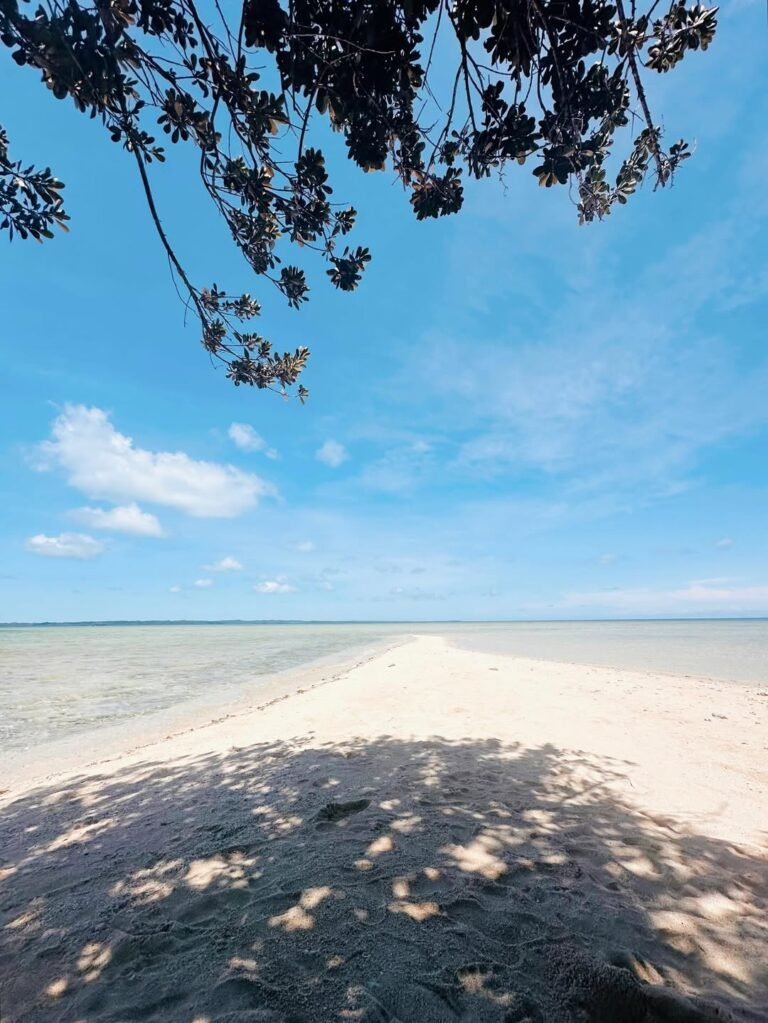
Top Polillo Island Tourist Spots & Things to Do
Burdeos Island-Hopping Circuit (Sandbars, Rock Islands, Snorkel)
On Day 2, go big: an island-hopping loop off Burdeos that proves why Polillo Island still feels wild. I start with Luli Sandbar—time it for low tide so the sugar-white strip actually appears. Next is Anilon’s “May Butas” rock, a hulking boulder with a swimmable tunnel; bring reef-safe sunscreen and water shoes for sharp limestone. Cap it with Isla Puting Bato, where pale cliffs, pocket coves, and calm turquoise water invite lazy snorkeling.
I arranged a joiner boat through my guesthouse the night before; it’s cheaper than chartering and you’ll likely make instant boat-buddies. Pack 2–3 liters of water, snacks for a beach picnic, a dry bag, and a small trash pouch—leave no trace.
Boatmen know the tides—ask them to sequence stops so you hit Luli at its peak. If seas are up, choose nearer islets first and keep the farthest point flexible. Sunset rides back to port are magic; the horizon here glows like a furnace after a clear day. I bring a lightweight rash guard for drift snorkels.
Polillo Island Beaches Near Town (San Francisco, Sabang)
For Day 1, warm up with easy-access beaches near the poblacion. San Francisco Beach is a quick trike ride; expect mellow waves, picnic huts, and a long breathing shoreline after the ferry. Sabang offers golden sand under coconut shade and fishermen mending nets—a classic Polillo Island beach scene.
I catch sunrise in Sabang for soft light and near-empty frames, then chase sunset at San Francisco for silhouettes you’ll actually post. Bring small bills for hut rental and snacks, and mind your trash. Weekdays feel almost private; weekends welcome friendly local families and sunset volleyball. Water shoes help on small pebbles.
Tamulaya Waterfalls (Forest Dip & Light Trek)
When the heat builds, trade salt water for spring water at Tamulaya Waterfalls. It’s tucked in forest, reached by a light, sometimes muddy approach that ends at a clear basin rimmed by ferns. I hire a habal-habal or trike to the trailhead; after heavy rain I ask for a local guide. Wear grippy sandals, watch slick rocks, and skip cliff jumps in low flow. In stormy weeks currents surge—check with barangay folks before you go and respect temporary closures. Always.
Minasawa Bird Sanctuary
For unhurried wildlife, sail to Minasawa Bird Sanctuary off Burdeos. Best light and activity are early morning or late afternoon when heat dips and calls rise from the canopy. I move slowly, whisper, and wear closed shoes for leaf-litter trails; binoculars are priceless. Coordinate boats and permissions in town, and remember: patience, silence, and shade yield the most sightings. Always.
Viewpoints & Golden Hours
Near town, viewpoints look over coves and palm lines—ask trike drivers for their favorite ridges. I frame sunsets with banca silhouettes and limestone edges, then linger through blue hour. After rain, skies burn; even phone cameras make Polillo Island postcards.
Polillo Island History & Culture Touchpoints
Greet with “Magandang araw,” dress modestly in barangays, and ask consent before portraits. Fiestas bring street dances and shared meals; contribute. A chat with elders turns Polillo Island into friends.
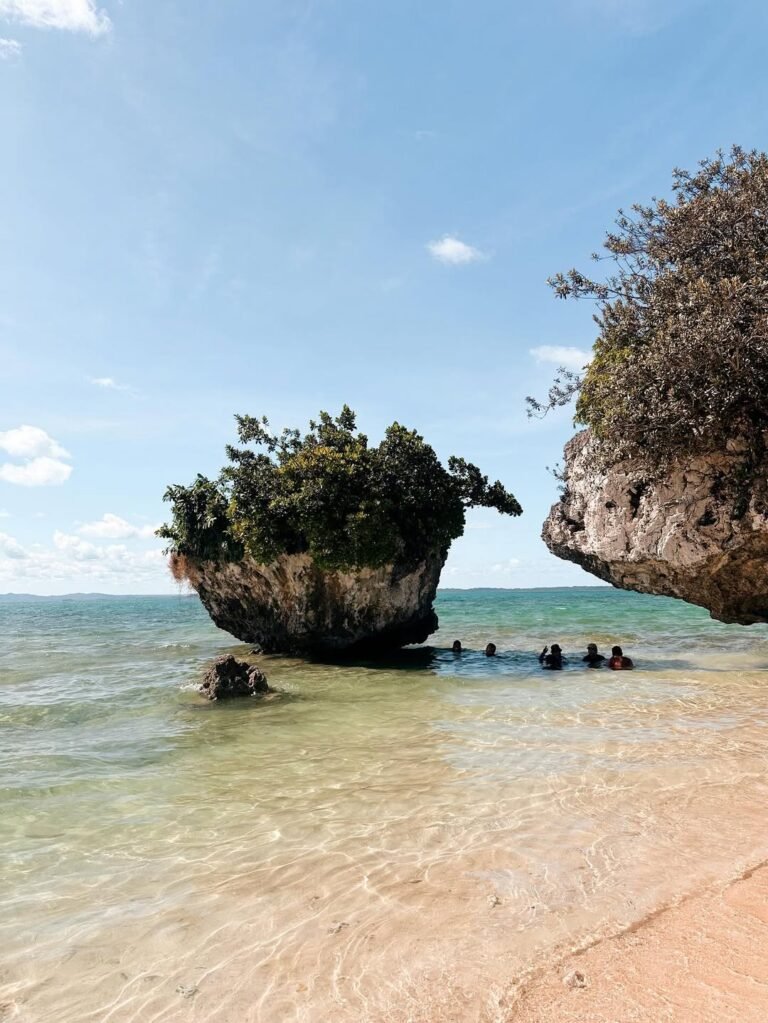
Where to Stay in Polillo Island (Town Inns, Rustic Resorts, Camping)
If you’re after convenience, I base in Polillo town first, then move outward. Town inns are walkable from the pier, close to eateries and tricycles—perfect for late arrivals. Rooms are typically fan or basic A/C, private T&B, and spotty Wi-Fi. “Basic” here means thin walls, intermittent water pressure, and power blips—manageable if you pack a power bank and patience.
For more nature, pick a Polillo Island resort on the coast (Bucao/Sibulan sides). Expect simple beachfront cottages, communal dining, and sunrise views instead of swim-up bars. I message the resort ahead for boat day trips and tide timing.
Backpackers on tighter budgets can try homestays—hosts often help arrange island-hopping joiners and share local tips. If you love stars, camping is possible on permitted beaches or nearby islets (ask barangay/resort first). I bring a compact tent, headlamp, and dry bag; leave no trace and secure food from strays.
Takeaway: For a smooth start, do Night 1 in town, then transfer to the coast or a permitted island camp. This staggered plan fits early ferries, keeps costs down, and maximizes your Polillo Island sunrise/sunset windows.
Budget Breakdown (Backpacker Daily Costs)
I track three tiers so you can mix and match:
Thrifty (~₱1,200–₱1,600/day):
Public trikes (₱30–₱60/hop), homestay/shared room (₱500–₱800), carinderia meals (₱70–₱120/plate), joiner boat share (split). Snacks + water (₱80–₱120).Mid-Backpacker (~₱1,700–₱2,400/day):
Fan/A-C town inn or simple beach cottage (₱900–₱1,400), trike charters for short loops (₱150–₱300/ride), joiner island-hopping (₱500–₱900 share), seafood dinner (₱150–₱250).Comfy-Backpacker (~₱2,500–₱3,500/day):
Better beachfront cottage (₱1,600–₱2,200), private boat with 3–6 friends (₱1,500–₱3,500/boat ÷ group), café treats and add-on tours.
Commute add-ons: Manila→Real bus/van (₱220–₱300, one way) + ferry fastcraft/RORO (≈₱250–₱450, one way). I carry small bills, refill a water jug, and bunch boat costs with new friends to keep Polillo Island days affordable.
Best Time to Visit Polillo Island (Weather & Crowds)
Dry months (Dec–May) mean steadier crossings, clear water, and easier island-hopping. I like shoulder weeks—late Dec–Jan or Apr–early May—for sun without peak-summer squeeze. June–Oct brings rain and occasional typhoons; ferries can be canceled last-minute.
Sea state dictates reliability: morning boats are generally calmer, so I plan dawn departures and leave buffer hours on return day. For sandbars, check low tide—hitting Luli at the wrong hour means no “island” to stand on. Bottom line: if your Polillo Island goal is island-hopping photos and easy logistics, go dry season, ride early, and time your sandbar stop to the tide table.
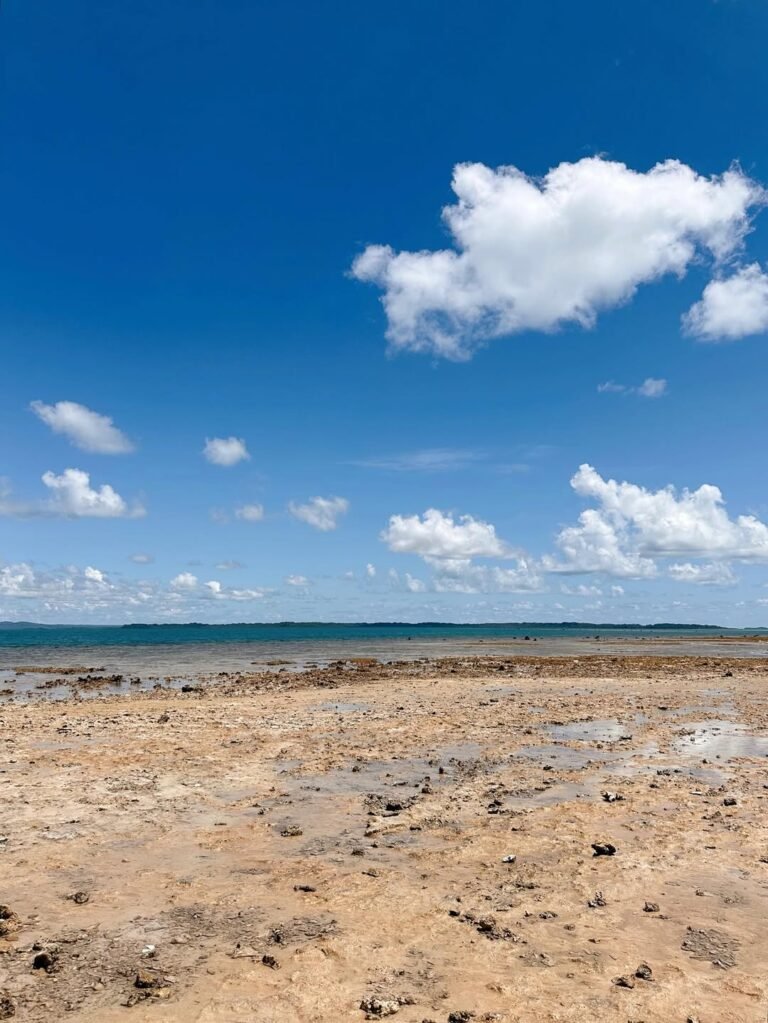
Polillo Island Itinerary (Backpacker) — 2D1N & 3D2N
2D1N “Weekend Warrior”
Night 0: Take the midnight bus from Manila to Real, arrive before dawn, and board the earliest ferry to Polillo Island.
Day 1: Check in near the port, drop bags, warm-up swim at San Francisco Beach, late-afternoon trike to Tamulaya Falls for a forest dip, sunset back in town.
Day 2: Early jeepney to Burdeos, joiner boat for a half-loop—Luli Sandbar, Anilon “May Butas,” quick snorkel at Isla Puting Bato—picnic lunch, return for the noon/afternoon ferry, then bus to Manila. Keep buffer time for weather.
3D2N “Island-Time”
Day 1: Land by late morning, early check-in, brunch at a carinderia, beach-hop Sabang and San Francisco, sunset on the pier; prep cash and a dry bag.
Day 2: Full Polillo Island island-hopping from Burdeos—start at low tide for Luli, continue to Anawan/Anilon, snorkel off Isla Puting Bato, optional cliff viewpoints, back by golden hour; seafood dinner.
Day 3: Sunrise stroll, public market snack run, quick church visit, souvenir photos, pack up, catch the late-morning/noon ferry. Pro tip: reconfirm the Ungos–Polillo boat schedule the night before and choose morning crossings for calmer seas.
What to Eat & Where (Cheap Eats & Seafood Finds)
I keep meals simple and local on Polillo Island. For breakfast, carinderias near the plaza serve silog plates and hot lugaw. Lunch is best as a market run: buy fresh fish or squid and ask your inn to grill, or pack it for an island-hopping picnic. Afternoon merienda? Banana cue, puto, or pan de sal from neighborhood bakeries.
Dinners lean seafood—try adobong pusit, sinigang na isda, or inihaw platters. In remote islets, there’s nothing to buy, so bring water, fruit, and trail snacks. Small bills help, and I always return containers to cut beach trash.
Safety, Etiquette & Responsible Travel
Weather and sea state rule the day on Polillo Island. I favor dawn boats, wear a life vest, and skip crossings if the coast guard posts an advisory. Reef-safe sunscreen, mask/snorkel that fit, and water shoes protect both you and the reef. Follow a strict trash-back rule—pack out everything, including food scraps and cigarette butts.
In barangays and churches, dress modestly; ask for photo consent before portraits, especially of kids. Keep voices low on trails and at Minasawa; wildlife rewards patience. At waterfalls and sandbars, avoid soaps and shampoos. Lastly, travel with cash, a headlamp, and a power bank—brownouts happen, adventures don’t wait.
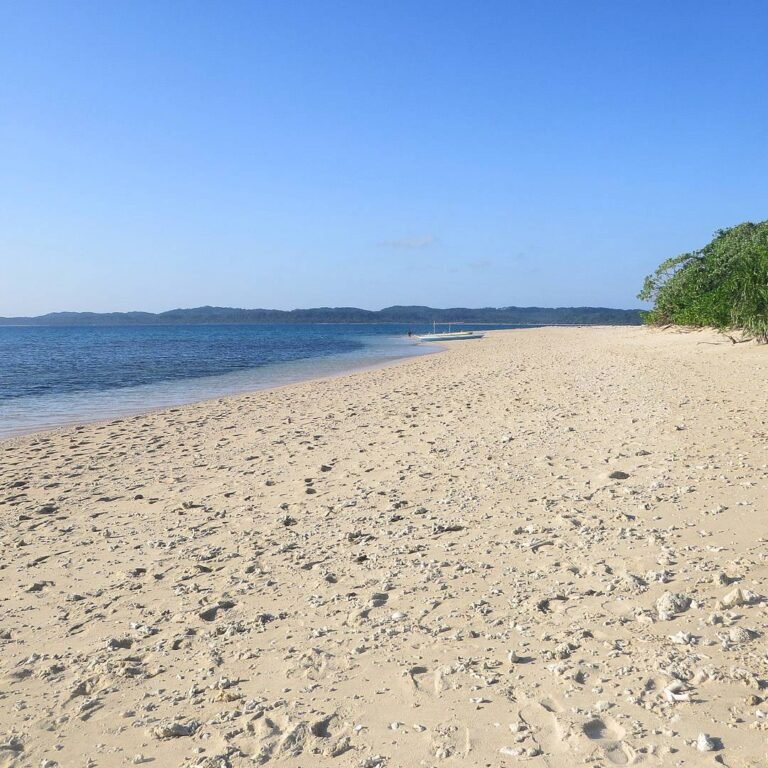
Polillo Island Travel Tips (Rapid-Fire)
-
Cash first. I withdraw in Manila/Real; the island ATM can be offline.
-
Offline maps. Download Polillo Island + Burdeos before you sail.
-
Power kit. Power bank + short extension; brownouts happen.
-
Waterproofing. Dry bags for phone/camera; boats take spray.
-
Headlamp. Useful for early ferries, beach walks, and camping.
-
Tide-aware plans. Check low tide for Luli sandbar timing.
-
Morning crossings. Seas are calmer; confirm boat schedule nightly.
-
Small bills. Trikes/karinderias rarely break large notes.
-
Snorkel set + reef-safe sunscreen. See more, harm less.
-
Share rides/boats. Joiners cut costs and are easy to arrange via your lodge.
FAQs about Polillo Island
How to go to Polillo Island commute?
From Manila, bus/van to Real (Ungos Port) ~4–5 hrs, then ferry 2–3 hrs to the Polillo Island port. Aim for dawn sailings.
What is the boat schedule from Ungos Port to Polillo?
Earliest boats run pre-sunrise with mid-morning and noon trips; late sailings depend on weather. Always reconfirm the Ungos Port boat schedule.
Where to stay in Polillo Island on a budget?
Town inns and homestays near the pier are cheapest; coastal cottages cost a bit more. Book Night 1 in town, transfer next day.
Best time to visit Polillo Island for sandbars?
Dry season (Dec–May) plus low tide windows. Check tide tables the night before to catch Luli sandbar above water.
Is Polillo Island beach camping allowed?
Yes, at permitted beaches/islets. Ask barangay/resort, pack out trash, and secure food from strays.
Are there tours for Polillo Island tourist spot hopping?
Yes. Lodges arrange joiner boats for Burdeos sandbars and rock islands; cheaper than private charters.
Is Polillo safe for solo backpackers?
Generally yes. Keep valuables minimal, ride mornings, and follow weather advisories and local guidance.
Nearby Attractions
Extend the route to Jomalig (golden beaches) or Patnanungan for quieter coves. On the mainland, pair Polillo with Real waterfalls before heading back to Manila. Internal links: Quezon Province hub, Jomalig guide, backpacking packing list, and bus-to-ferry commute tips for coastal towns.
Read our travel guide about Quezon Province.
Final Thoughts — Why I’d Go Back
Slow mornings, empty beaches, and the kind of small-town warmth you remember—that’s Polillo Island. I came for the sandbars and stayed for the hush between boat rides. If this guide helped, bookmark it, share it with your travel barkada, and drop your questions—I’m happy to refine your itinerary.

